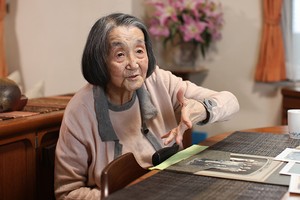THE ASAHI SHIMBUN
April 4, 2025 at 17:57 JST
 Kenji Shimizu, president of Fuji Television Network Inc., visits the communications ministry on April 3. (Kohei Higashitani)
Kenji Shimizu, president of Fuji Television Network Inc., visits the communications ministry on April 3. (Kohei Higashitani)
A former TV announcer at Fuji Television Network Inc. said an unwritten requirement of her job was to quickly make jokes after being groped or sexually harassed by a VIP.
“The ability of an announcer was measured in fending off such sexual harassment and turning the act into laughter,” she said.
The woman explained the work conditions at Fuji TV after a third-party investigative committee released a report concerning a suspected sexual assault by Masahiro Nakai, a now-retired entertainer who appeared on Fuji TV programs.
The report described Fuji TV as a cesspool of sexual harassment, and that the assault was essentially an extension of work there.
“To us, that was ‘normal,’” the former announcer said. “The results (of the report) were not surprising.”
She explained that when she was a Fuji announcer, sales employees often called her to attend gatherings involving corporate sponsors. There, she would be sexually harassed, and some of the sponsor employees even touched her.
She said she long felt that was the ordinary state of affairs at Fuji TV.
But she now realizes that simply putting up with such abuse was a factor behind a corporate culture that allowed sexual harassment to continue. She feels she let down younger female employees.
The investigative committee conducted a survey in February of 1,263 Fuji TV employees and executives.
Overall, 9.7 percent of respondents said they had been forced to attend gatherings with people from production companies and commercial sponsors.
Among the female announcers who responded in the survey, the ratio was 24.1 percent.
As a result of the committee’s report, the communications ministry on April 3 issued a severe warning to Fuji TV and its parent, Fuji Media Holdings Inc., criticizing the two companies for causing a loss of public trust in broadcasting.
It was the second administrative directive to the two companies in relation to allegations about sexual abuse by Nakai.
The directive ordered the two companies to implement measures to prevent a recurrence and submit reports on whether those measures were actually in place.
The investigative committee report included 118 cases of sexual harassment at gatherings involving executives of talent agencies as well as entertainers who appeared in Fuji TV programs.
One individual reported being touched by an entertainer who then asked her to go with him to a hotel.
Another said her superior scolded her when she consulted about harassment and told her to handle the matter by herself.
The report also confirmed that Osamu Sorimachi, a former board member at Fuji TV, had sexually harassed two younger female announcers. But rather than discipline Sorimachi, Fuji TV promoted him.
According to the report, the actions by Fuji TV had a major negative impact on employees who realized that they would be wasting their time consulting about sexual harassment.
The report also said former executives, such as Koichi Minato, who resigned as company president after the Nakai scandal came to light, and Toru Ota, a former chief of programming who resigned as president of Kansai Television Co. on April 4, regularly called female announcers to gatherings with male entertainers and talent agency executives.
The president of a production company who has worked for many years with Fuji TV explained that network employees involved in production and editing used their ties with certain entertainers to get ahead in the corporate rat race.
A desire to satisfy the entertainers may have led to excessive demands placed on female announcers by such Fuji TV employees, the company president said.
The report concluded that the corporate culture allowing sexual harassment could fester because no action was taken against those who harassed the women. This inaction led to an escalation of such acts and strengthened the reluctance of the victims to speak up because they were aware nothing would happen as a result.
(This article was written by Midori Iki and Saori Kuroda.)




















A peek through the music industry’s curtain at the producers who harnessed social media to help their idols go global.
A series based on diplomatic documents declassified by Japan’s Foreign Ministry
Here is a collection of first-hand accounts by “hibakusha” atomic bomb survivors.
Cooking experts, chefs and others involved in the field of food introduce their special recipes intertwined with their paths in life.
A series about Japanese-Americans and their memories of World War II